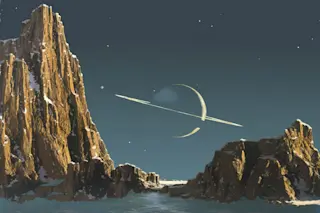Over the last half century, spacecraft have visited every planet and their major moons, as well as two dwarf planets and more than a dozen asteroids and comets. Thanks to high-res images, we know these worlds intimately and can appreciate what makes each of them unique. These days, fewer than 3 in 10 Americans are old enough to recall a time when our neighboring worlds were indistinct dots in even the most powerful telescopes.
And yet, even before there were spacecraft to show us, in the 1940s and ‘50s, readers of magazines such as Collier’s, LIFE, and Sky & Telescope had a pretty good idea what kinds of scenery we might find on the moon, Mars, Pluto, and the moons of the outer planets. All these worlds came to life in paintings by a single visionary artist: Chesley Bonestell (pronounced BONN-uh-stell). He’s the subject of a new feature-length documentary, “Chesley ...














